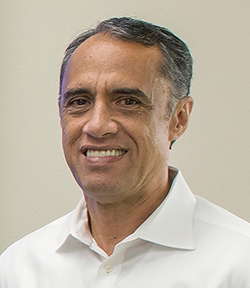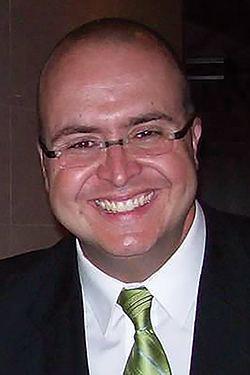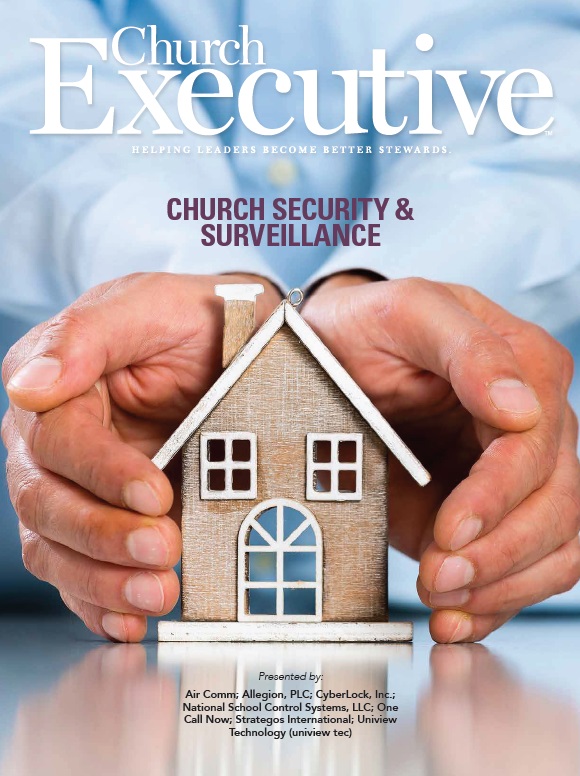
 Expert advice for helping to prevent — and, if necessary, respond to — a security emergency on your campus
Expert advice for helping to prevent — and, if necessary, respond to — a security emergency on your campus

Business Leader, Security Integrator Channel
Allegion, PLC
In a lot of churches, an “it-can’t-happen-here” mentality prevails. But how big of a threat is a security emergency?
Bill Cushwa: Let’s quickly dispel the false sense of security.
Our school shooting occurred seven years ago in Chardon, Ohio. Three children died. It’s a sleepy, historic small town. Now, consider the idyllic communities of Virginia Tech, Parkland, rural Pennsylvania Amish country, and Sandy Hook.
Churches designed to be open and welcoming are vulnerable to extremism and targeted violence.
Don’t narrowly focus on ‘active shooter,’ since our products have been used more frequently for violated restraining orders, custody disputes, domestic violence that comes into the worship space, and neighborhood incidents that suddenly move onto church or school property.
Chris McConnell: While it’s difficult to imagine why a place of worship would be the target of a violent act, recent history has shown that nowhere is safe, including churches. Critically, many churches don’t have security measures in place. Attackers know that at many churches, they can walk in without having to pass through a metal detector or similar security.
In the same way that schools now have emergency plans and locked doors in place, I believe we’ll see churches starting to adopt

Program Manager — Religion
One Call Now
these types of strategies.
John Moa: Most churches in America take an open-armed, open-door approach to their communities. But at some point, the doors are locked and the facilities secured with valuables onsite. Then, it becomes a security consideration. Especially in large churches, audiovisual equipment, computers and musical equipment all become targets for theft.
Also, large congregations typically want to make their facilities available to other groups. Obviously, that introduces a variety of complexities, schedules and security issues.
Keith Shaver: Houses of worship are welcoming by nature, with open access and public schedules for worship services and special events. Where there are a large number of people gathering at a specific time, this openness can present unique opportunities for someone with a motive to make a statement.
To show the possibility of a threat, I have churches simply perform a Google search of topics such as ‘church crime,’ ‘church robbery’ or ‘church thefts’ in their local community. This usually returns information and examples of several crime incidents.

Director of Sales
CyberLock, Inc.
Additionally, there’s a resource published by Carl Chinn that focuses on crime statistics in houses of worship and faith-based schools.
A quick check with local law enforcement will be helpful, as well.
Brad Aikin: Churches, unfortunately, are at risk for security threats due to their unique operations.
There is a sizable assembly of people in a single, common area, and they typically gather on a predefined schedule. Many churches have schools or daycare services, which can increase risks associated with child security or family conflicts.
Additionally, churches don’t always have access to the security information required to be disclosed among local municipal and state facilities.
Barry Young: Churches are a soft target because attendees’ backs are to the entry point of the threat. So, their attention is away from the threat.
Also, virtually all churches take a public cash offering.

Vice President of Operations
Strategos International
Are most churches prepared to respond to a security emergency?
Moa: No, most churches aren’t prepared for emergencies, whether it’s an active shooter, a natural disaster, or somebody with a restraining order.
In part, it’s because they don’t know what resources are available, especially police, fire and emergency services. Generally, communities try to stay ahead of problems and would love to educate on how to be proactive about security.
Shaver: Many churches have taken measures to protect their staff with intrusion or burglar alarm systems and are now beginning to investigate the video systems to extend the security coverage.
But are they prepared to respond to an emergency response? Probably not — that requires ensuring staff and volunteers are trained and have a well-thought-out plan to deal with the situations that can arise.
The response must start with a trained security and safety team that is then complemented with electronic security capabilities.
Aikin: Typically, churches only have adequate security to thwart basic theft or vandalism. Most have not prioritized a security emergency response plan, which should be created and communicated to staff and members.
Implementing the proper security culture within a church is crucial. This should be viewed as the responsibility of the collective

Vice President
Air Comm
group, not a single individual or committee.
Young: The majority of churches are not prepared for a security emergency. There are several indicators of this.
First, almost 100 percent of public schools have trained their staff in lockdown training — meaning they know what to do to stop a threat and how to protect students — while almost no churches have trained nursery, Sunday School and children’s ministry leaders how to respond if a threat were to come into their ministry room.
Second, most churches don’t have trauma training or a trauma kit. A first aid kit is good, but churches need a trauma kit. A good trauma kit has a minimum of tourniquets, a chest seal, and quick-clot bandaging to stop the bleeding-out of wounds.
Finally, many churches have a key problem: they don’t know how many keys they’ve given out; they don’t know who has the keys; they don’t know how to get the keys back; and they don’t have a written key policy to make sure there’s no unauthorized access.
McConnell: No, I don’t think that most churches are prepared to respond to a security emergency. But with the existing and growing threat of violence, churches much start to consider, as part of their mission, protecting their parishioners and visitors while within their doors. This starts with putting a plan in place that includes comprehensive communication, surveillance and security. This important first step will put churches on the right path to improving safety.

Vice President of Sales
Uniview Technology (uniview tec)
Cushwa: Churches are moving in the right direction, but they’re still ill-prepared. Greeter programs are the most effective form of security. Making eye contact and addressing each individual in a specific manner is a low-cost way of sizing up a situation. Noticing odd behavior or addressing a known challenging individual can stop trouble at the door.
How can a church make itself less of a target?
Shaver: Being visible — with people and technology — is one of the most important factors. Door-greeters, welcome committee members and security-minded volunteers walking the parking lot all provide a visible indication that security is a concern.
Video cameras which are clearly visible and pointed to the parking lot and entrances of the church will provide another visible security measure. The cameras provide a sense of well-being for members and guests, but also clearly illustrate to others that images are being recorded and viewed live.
The presence of a local law enforcement vehicle at services can also serve as a deterrent, as is the presence of a uniformed law enforcement officer inside the building.
Aikin: Begin by developing a plan that addresses prevention, protection, mitigation, response and recovery. To ensure there is

Founder & CEO, National School Control Systems, LLC
Inventor, Bearacade Lockdown Response System
secure control of the facility, consider: Who has authorization to manage access? How is access controlled during various events such as large gatherings, daycare drop-off and pick-up? Who as authorization to replicate and issue keys? and Is there an accurate record of who is assigned keys for access and who has master keys? If not, consult a local security integrator or locksmith to regain secure credential control.
Young: Lock-out, get-out, take-out.
First, lock-out training. Staff need to be trained in how to lock out a threat. This can be locking out a threat from main access doors, to doors of classrooms and offices.
Next, you need get-out training. Personnel need to be trained in how to evacuate a building. In addition, personnel need to be trained in how to create an exit.
Finally, make sure take-out training is in place. In a worst-case scenario, staff need to know how to stop a threat with the tools in their classrooms, offices, or wherever they are in the facilities.
McConnell: An ounce of prevention is worth a pound of cure. Being on top of a security situation before or during the fact — not after — is one way to really help prevent tragedy.
The first and most essential piece of a church’s security plan should be communication. Two-way radios provide communication among a large number of people. In the event of a security incident, radios allow a church to have instant communication with staff, visitors and volunteers.
Another consideration for churches is live-monitored security cameras. We have a division that produces security cameras that are 100-percent live-monitored, meaning that a church can respond instantly by contacting law enforcement and implementing its security protocols. We can even install an intercom system, allowing monitors to speak directly to anyone in the church over a loudspeaker. Obviously, this type of system provides clear advantages to simply reviewing videotaped security footage after the fact.
Cushwa: Work through a comprehensive emergency operations plan for all types of emergencies, from fire, to tornado, to gas leaks, allergies and hostile intruders.
What can we do to create safe interior spaces, should all these other approaches break down or be thwarted? That’s where our attention was when developing Bearacade.
It’s critically important to have your local fire and police responders tour and know your buildings. You should also invite your neighboring districts, who would also be responding.
Finally, don’t fluff going through the motions when practicing your emergency drills. You’ll perform as you train.
Moa: About six months ago, my own church deployed local resources — the civic groups and so on — to ramp up our security. I, as part of CyberLock, Inc., also had practical experience to lend.
The first step is lighting. The more, the better.
Second, make sure you have control of your keys. Often, mechanical keys are given out with a sort of open-door philosophy — Why have just one person with a key and always be bothering them? Why not give everybody a key? This is where a system with smart locks comes into play.
Third, you need an alarm system. Surprisingly few churches have one.
Finally, cameras. Merely having a visible camera is a deterrent.
In the event of a security emergency, what are the most critical elements of an effective response plan?
Aikin: The most effective element of an emergency response plan is the plan itself. It’s critical that members and staff know what actions to take in an emergency.
Second, communication. As part of the plan, it’s important that members know what information to communicate, to whom and how. This can include audio systems, remote alert buttons, mobile devices and more.
Finally, a good security plan implements layers of security to help mitigate the progression
of emergency events. This should start beyond the property perimeter and parking lots and progress to building perimeter, corridors, offices, classrooms and assembly areas.
Hillary Keller Bowling: Communicate. During the event (if possible), you must be able to send notifications to those on site to shelter in place or to get out.
After the event, alert the congregation of the incident, when it is safe to return, or of any needs that have arisen due to the event.
Cushwa: Information is king. Any details, alert or guidance greatly improves your ability to choose the right direction, whether it’s evacuation, sheltering in place, or preparing to engage or address the situation.
Inaction and indecision are not an option — not for when my daughter is having an allergic reaction, nor for a hostile intruder. Decide. Act. Commit.
Not having supporting tools puts us all in a riskier position. EpiPens®, tourniquet training, AEDs (automated external defibrillators) and fire extinguishers are joined by my Bearacade unit as public response options before emergency services arrive.
Maintain your position until you’re 100-percent sure the good guys have arrived. Worshippers were safely concealed during the recent Tree of Life Synagogue tragedy but came out of hiding when they thought the shooter was gone. He retreated back into the worship space when confronted by responding police and shot at least two more individuals.
McConnell: Instant, widespread, communication is essential. When an incident happens, everyone needs to be aware of it right away.
First and foremost, not panicking is key.
Second, execute the plan. If no one knows the plan, or if it can’t instantly be communicated, it’s not worth much.
Moa: The biggest element is preparation. Have a structured plan, including ways to communicate what’s happening. Otherwise, it can be chaos.
Next, have a follow-up plan. For example, if there’s a fire, most companies would know to reconvene at X facility, area or place. There, you can get a headcount.
Finally, have a way to account for what happened.
Shaver: First, remember that there has to be a plan, and that plan must be followed as written.
Second, communication to staff and members outside the immediate threat area must be done to protect those not in the area of the emergency.
Third (or as soon as possible), law enforcement must be contacted.
Finally, the church must allow law enforcement officers to take control of the situation.
How can tech or physical devices and tools provide surveillance or added protection for churches?
Young: Now is the time to invest in these technologies. We recommend churches start by having locks on almost every door. Most children’s areas I visit have no locks, or extremely weak locks. We need a powerful lock on each door to an area that has people in it, especially children’s spaces.
Cushwa: Good businesses will work with you to ease acquisition costs. Some can be added immediately — that’s our goal and passion. If you’re waiting for the George Jetson solution, who are you putting at risk today?
McConnell: Communication and security technologies have dramatically improved. It’s not nearly as expensive as it used to be to get a security system installed in a church or a school. These systems can be alerted when there’s movement in a hallway, all the way down to if someone stops in that hallway for more than five seconds.
Further, two-way radios provide a method of instant communication. Many large churches have instituted radio communication systems. Radios are a simple, compact and easy-to-use tool that can greatly enhance security for churches.
Moa: I believe the vast majority of all U.S. congregations are under 300 in attendance. So, they might gravitate toward lighting or other low-tech security tools.
On the higher-tech side, a smart lock / smart key type of system is quite affordable. One could deploy it and expand over time. For example, start with one entry point, then the worship facility inventory room, then the accounting room, and anywhere else valuables are stored. It doesn’t take much labor to pull out a mechanical core and put in an electronic one. There’s no laying wire or pulling cables.
Shaver: Surveillance needs to be operational 24/7. You simply can’t achieve that level of security coverage without technology. Burglar alarm systems ensure you have a secure building as staff members arrive early or depart late, or after youth functions or praise band rehearsals. Video cameras provide the live view and recorded video history of an event.
Investigate technology tools as soon as possible. The layered security method recommends you begin with a base and expand to greater capabilities when funds are available to invest in the technologies.
Aikin: Don’t buy technology until a security assessment has been conducted. This ensures the proper technology is identified, coordinated and implemented. And when it comes to choosing solutions, it’s important that openings still have free egress. Seek out options that ensure life safety, as well as security.
Consult your police and fire departments regarding local codes and requirements, as well as security professionals such as commercial integrators and locksmiths. They can assist in the acquisition of tools, including prioritization of needs to be addressed.
Who should be trained to use these security and surveillance tools, and what form might that training take?
Cushwa: All full- and part-time staff should be required to go through training — for bloodborne pathogens, CPR, allergic reaction response, and using Bearacade units — and acknowledge, in writing, that they attended and understood it. We spend more time on the training, handling what-if scenarios, and documentation than we do providing our units.
In churches, all volunteers, aides and regular building users should also go through the training.
I like in-person, classroom training sessions. You can see who’s unsettled, who’s grumpy, who’s confused, and how it’s all being accepted.
Keep a professional log of the training (something we provide to every safety partner) that documents who attended, what was introduced, what questions were raised, what handouts were provided, and how follow-up was handled.
McConnell: Two-way radios are intuitive and easy to use. This is part of what makes them such a helpful tool for enhancing safety and security. Indeed, almost everyone has used a two-way radio, or at least understands the basics of how they work. You can teach about 95 percent of what a person needs to know in a one-minute conversation — how to power it on, turn up the volume, use the push-to-talk button, how the earpiece works, and so on.
With respect to security cameras, you’d want to put those under a few people’s responsibility, as it’s a more long-term role than managing two-way radio use. Monitors need to be aware of how those cameras work and are used.
Moa: Typically, you’ll have better training continuity with staff. I envision a structure where a Deacon board or Elder board member — somebody highly committed to the congregation — takes on the primary liaison role between staff and volunteers.
There should also be a second person knowledgeable of the system, since redundancy is extremely important. Then, have a few secondary conduits, or liaisons.
Buy from security companies versus big-box stores, as security companies want customers to experience competent service and consistent updates. Often, it makes sense to go back to the manufacturer and ask, ‘Are there tips for helping us facilitate training?’ Usually, they’re free — but you might not know these resources are available unless you ask.
Shaver: A staff member should always be in the leadership position to serve as a liaison to other staff and volunteers, provide accountability, and show the importance of church security. Meanwhile, volunteers will be needed on worship and event days so the staff can focus on meeting ministry needs.
Volunteer training should be ongoing. Threats change as communities grow, and technology advancements are ongoing, so the volunteer force must continue to be trained.
The best technology training resource is the local security equipment dealer and the equipment manufacturer.
Aikin: Appropriate staff should be trained in the administration of security resources. All staff and volunteers should be able to operate security devices with limited or minimal training and — again, most important — should be trained on the security plan.
This training should be part of all initial onboarding. Subsequently, this plan should be revisited, updated and discussed frequently with members.
Young: We recommend parking team, ushers / greeters, children’s workers, and security team be trained on security and surveillance tools. Over time, more and more staff should be brought into the training.
We recommend a full day of training. So many people want to take a one- or two-hour class, but we’re talking about saving people’s lives. During stress and duress, we’ll only remember and recall what we’ve trained. Our churches need training that also includes scenarios.
Keller Bowling: Having a mass notification system in use regularly will ensure messengers are trained on using the system, are comfortable with the system, and can even save messages in the system to send in case of emergency.
Anyone who needs to message the whole congregation or groups within the congregation should be trained on these tools.
Ongoing training use ensures you’re ready to use the system when the unthinkable happens. If you have a messaging system but don’t use it regularly, monthly trainings are advised. Training should include sample calls / emails / texts that can be sent as reminders for fundraising, stewardship, festivities, weather events, and more.
What’s the typical learning curve for tools like these?
Moa: On a large campus that incorporates cameras, or even a smart key system, the person managing and caring for these tools should understand a bit of software functionality, as well as security — maybe a facilities manager. He or she should understand audit reports, or how to stop an access permission for somebody who shouldn’t be there. This person can also rely on the dealer, reseller or factory.
Shaver: Using the layered approach, the church can start with simple and reduced-complexity technology tools to limit the learning curve. Training for a simple intrusion panel can take just a few minutes. Training of the video system can take just an hour or less.
Aikin: The administrative activities of security solutions can vary. This should be a key discussion when consulting with a designated security professional. There are solutions designed for self-administration. Or, many security providers offer the ability to monitor and manage the security of your facility on your behalf. This can include video and physical access control monitoring, creation and deletion of credentials and other needs.
Young: You’d be amazed what a staff member can learn from just four hours to a full day of training. Real-world techniques that have been enforced through scenario training can make a world of difference.
Keller Bowling: One Call Now is simple to use and can be used on the same day as purchase. Training takes very little time.
McConnell: Our company facilitates most of the video surveillance monitoring; but we do allow the church staff to pipe in and monitor, if they wish to do so. Video surveillance monitoring training can be as detailed as, ‘This is how you log in and view the cameras,’ to ‘Here’s how to set the parameters of the cameras,’ which could require a quick half-hour discussion or a little longer.
Cushwa: Preparing to use Bearacade is simple. Handling is simple. Motions needed are few. Minimal strength is needed. One training session, followed by a few personal practice sessions, is enough to completely understand and effectively use it. Reinforce with quarterly emergency drills.
What must a church do to ensure the effectiveness of these tools?
Shaver: It’s simple: use the system. Throughout the day, check the status of the burglar alarm using the app on your phone. For the video system, the live view on your cellphone lets you check cameras and know very quickly if the system is working.
Aikin: Tools are only as good as the people informed on how and when to use them. While the tools selected should match with the intended application and user experience, any prior knowledge required to operate specific tools should be included in onboarding activities and practiced on a recurring basis.
Keller Bowling: The church can work with its congregation to ensure it has updated contact information for members. The member list can be segmented into sub-groups for easy management of committees and to suit unique messaging needs. With our platform, messages can be sent via phone calls, texts, emails and even social media postings.
Young: The church-at-large has to get out of denial. In 2017, there were 261 violent church attacks, compared with four in 2004. Violence is rising in churches, and ignoring the problem is never the answer.
McConnell: Two-way radios tend to disappear, especially when they’re used by volunteers. Usually it’s not intentional; people often forget they have them, leave them in their cars, or accidentally take them home.
To prevent this type of situation, I suggest labeling the radios and using a check-out sheet with each user’s name and phone number. It can be as simple as putting a numbered sticker on each radio. That way, when all the radios come back, you can see if one is missing.
We also provide bank chargers with up to 18 places; so, one 18-bank charger will charge 18 radios with a single outlet. That makes it even easier to see if a radio is missing.
Cushwa: Our products are designed for interior commercial doors found in classrooms, offices, conference rooms, chapels and more. Our pre-use process is well-documented in written, picture and video form. A maintenance or facilities person, or even a volunteer, can easily handle the prep work.
Consistent placement throughout a campus makes everything fast, intuitive and effective. We recommend placing our units in approximately the same location within each selected room — no worrying about where it’s kept, no delay in locating and deploying. Everything we do is about time.
Moa: Though church security and surveillance training budgets tend to be driven by frugality, churches often overlook the value of resources provided by the makers of those products, as well as community groups. For the most part, churches don’t know about all the resources available to them.
If a church isn’t 100-percent confident in its current technology’s ability to help thwart a security emergency, what advice can you offer?
Aikin: Start with a security assessment of your current facility, policies and procedures. Reach out to local police and fire departments for consultation and evaluate resources such as PASS Guidelines and NFPA 3000.
From there, leverage security professionals — like commercial integrators and locksmiths — to conduct an audit and provide recommendations. Be prepared to define your needs, concerns and abilities.
Young: Keep training. Don’t stop learning. Leaders are learners.
Keller Bowling: Research what other churches in your area are doing, and team up to hold trainings. Ask vendors what other churches are doing. We serve more than 10,000 churches and can help with best practices for mass notifications. Ask your vendors for references of other churches like yours to better understand the product’s capabilities.
McConnell: Start by evaluating your ability to hear, speak and see. This means having the ability to communicate and visually access the facility. As I’ve discussed, a network of radios and security camera system allows churches instant access across the church and to the people inside.
Cushwa: For me, this is more of a passion than a job. My background is in the administration of schools, church settings, and being a parent. If you want to share your security concerns, I’ll respond with ideas, suggestions, connections to experts I’ve worked with, and more.
If you don’t directly purchase something from me or don’t feel my various products are right for you, please know that I’m happy to share my knowledge and time. We’re one layer of safety for operations that are global and extensive. I’m confident we can help you.
Moa: I’d say lighting is the best first step towards security. It’s common sense: the better lit the area, the less likely an attack.

Additionally, people are used to keys; so, a smart key electronic lock system is a good option. There’s simply a key and a lock, and that key can be set up so that it only works during a certain time.
Also, a smart key system saves the church from having to re-key because it can make a key inoperative if lost.
Shaver: Ask for assistance — no one knows it all, but there are organizations and trade publications, such as The Church Network and Church Executive, which are resources.
You can also interview local security dealers to discuss options. Contact manufacturers who have a passion for houses of worship and who understand the budget constraints churches face. These manufacturers can assist in education and also help select local security dealers to ensure a good fit with the church.
What can a church expect to pay for security – from simple tools to complex surveillance systems?
Young: You get what you pay for. I’ve heard of free trainings, but often times these are extremely basic with no scenario training. Often, $99 is a good middle-ground cost of real-world, hands-on training.
McConnell: A six-bank two-way radio package starts at $1,400. An 18-bank package starts at $3,600, depending on the radio style.
Cushwa: Bearacade units are $59 each, and the price goes down by volume.
From there, facial-recognition services, visitor management systems and social media monitoring services can be incorporated; many have acquisition and monthly monitoring costs. When you pursue those options, your due diligence and RFP process should likewise become more detailed.
Moa: A smart key system costs a few thousand dollars, and you can add on to it. While the keys in a smart key system are more expensive than mechanical keys, they can be managed better. If a large church rents out part of its facility, it can supply a PIN — for an access control system or alarm — or a mechanical key. With a PIN, it must remember to change it; so, the church is a bit more exposed than with a smart key system, which lets groups regularly on campus rent or purchase keys. Then, you can hold that group accountable for who went in and when.
Shaver: The layered approach allows a church to address the simple needs first, which could be a burglar alarm for less than $20 per month or a four-channel video system for as little as $900, or $20 per month over a three-year period.
While intrusion alarms are best installed by local licensed companies, many times the simple video camera systems can be installed by church members with working knowledge of security cameras, or networking experience. Our products are ideal for this type of installation for many reasons, and this greatly reduces the cost of the system.
Aikin: Security emergency plans can be developed, communicated and practiced with little financial costs. Developing a plan is the most important tool. Seek out help from local resources, as many security professionals offer free facility assessments.
For churches with mechanical security devices, upgrades can range from $25 (new keys systems, replaced hardware, etc.) to $200 per door. When a church is ready to upgrade from mechanical security devices to electronic access control for a networked, remotely monitored solution, it could range from $1,000 to $3,500 per door.
Any solution you select needs to meet appropriate National Fire Protection Association®, Americans with Disabilities Act, and local code requirements.
— Reporting by RaeAnn Slaybaugh



It was interesting to learn about how smart locks and alarms can be really useful in a church so that thieves and others are discouraged from taking advantage of the church. I can imagine that it could be really useful for a church to make sure that they can protect themselves and their building so that they can be a safe place of refuge. Getting some help from a professional to manage their security could be really useful.